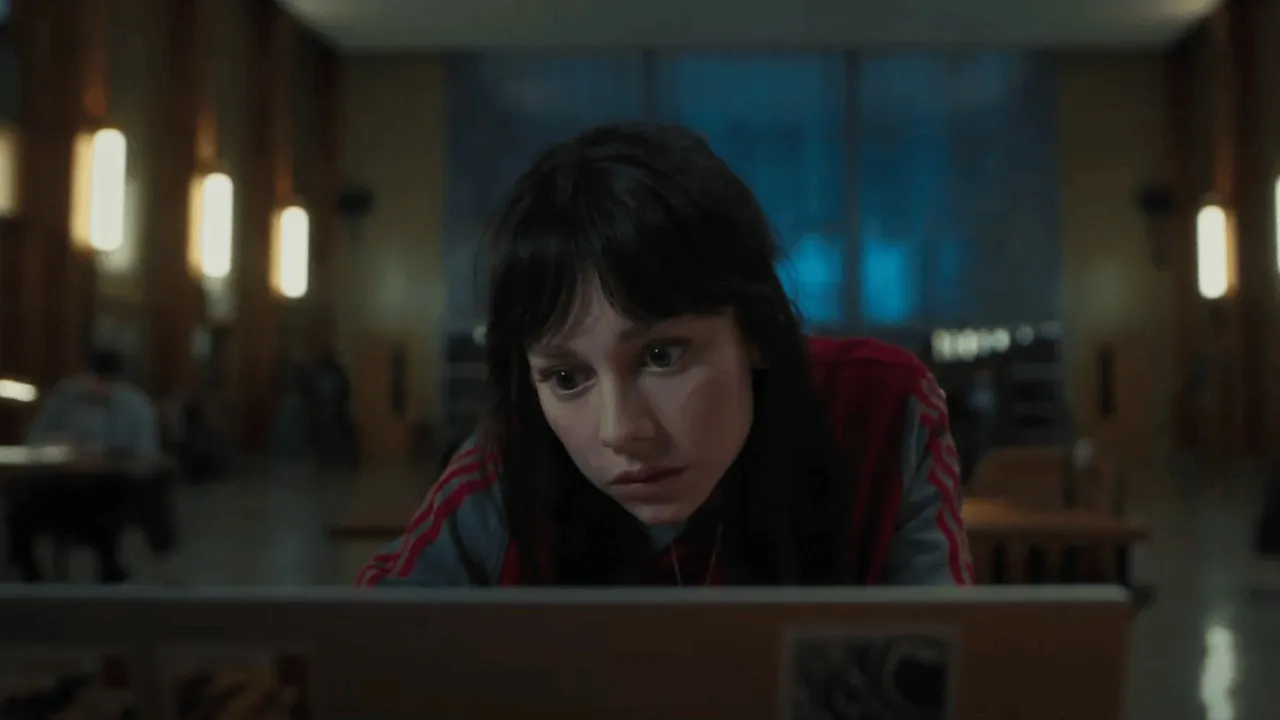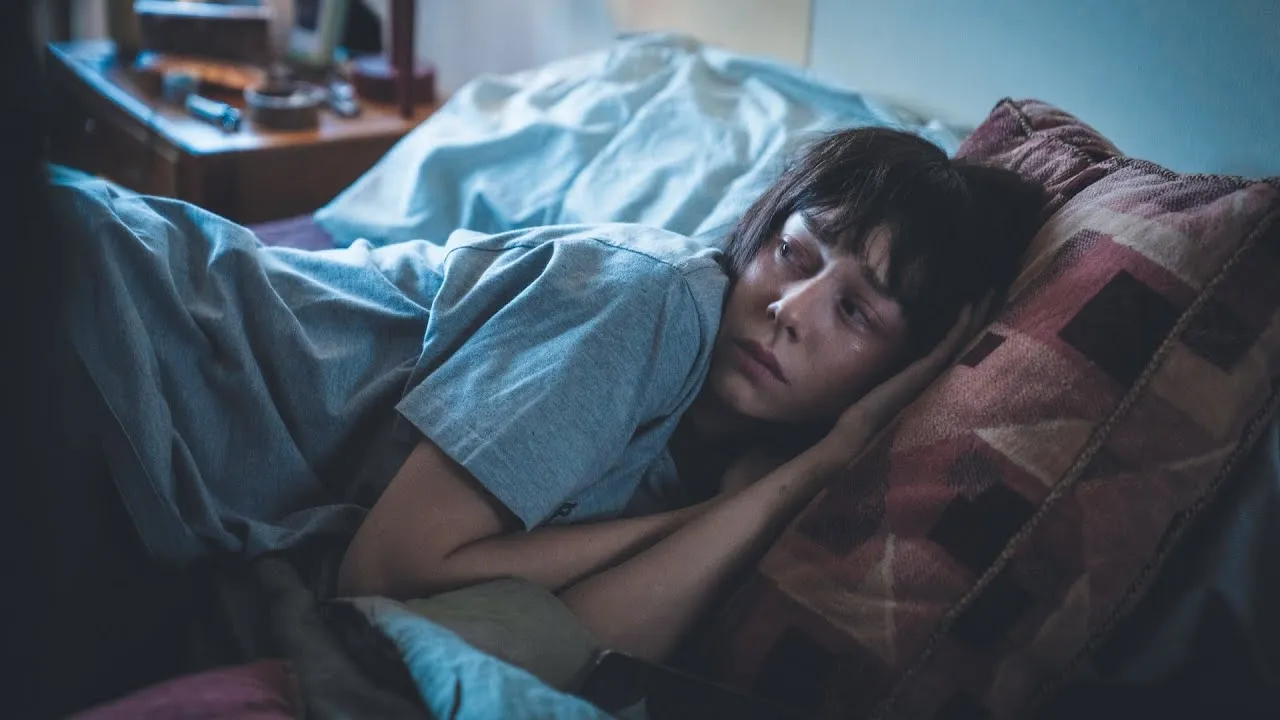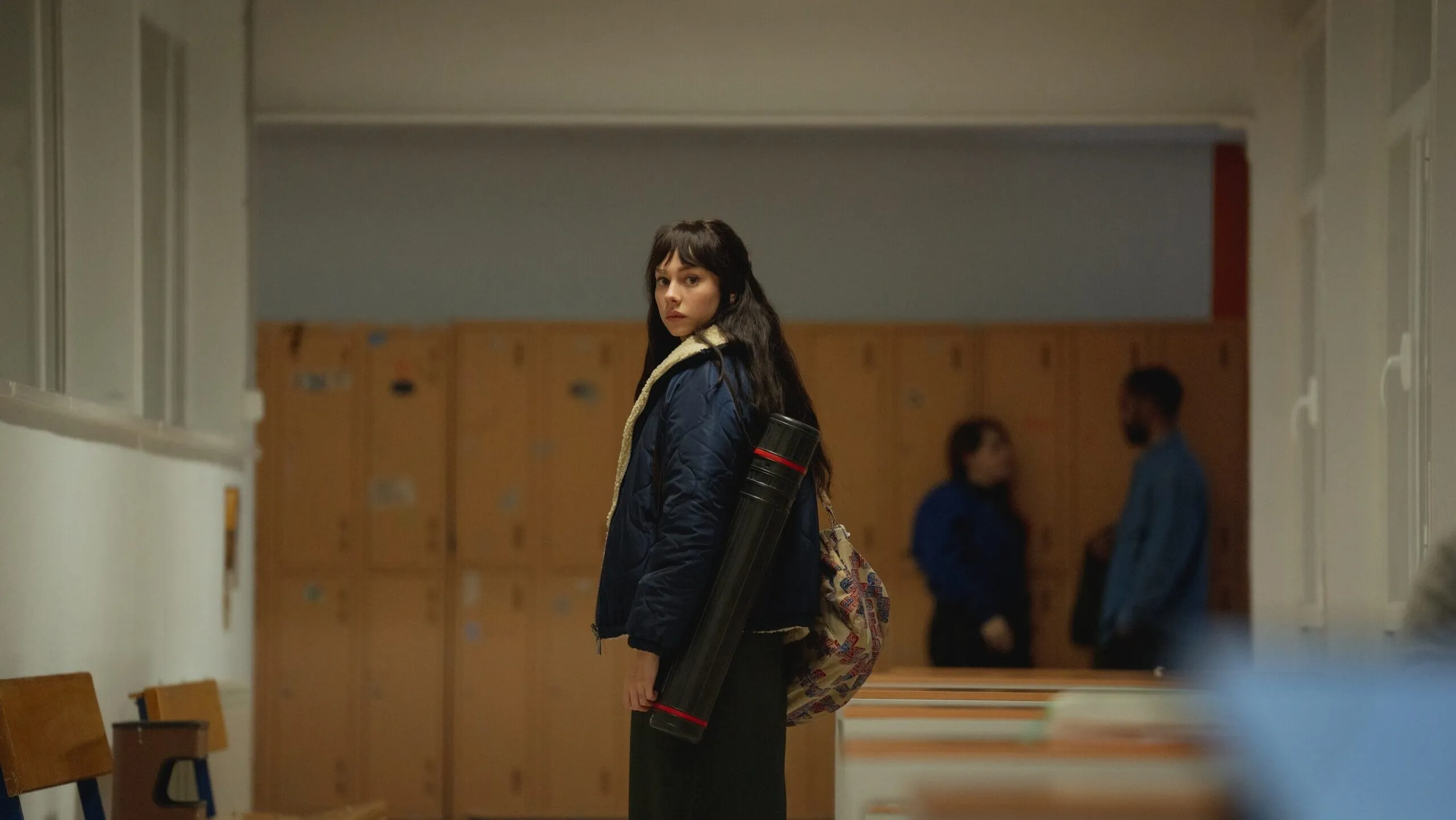The quiet, ominous dread that permeates The Wailing, Pedro Martn-Calero’s Spanish-language debut, is the kind of horror film that ingests you. The film, co-written with Isabel Peña, is a triptych of interwoven stories about three women hounded by a supernatural entity visible only through screens or cameras.
On the surface, it’s a psychological horror story with strong feminist implications. Still, it’s also a melancholy meditation on trauma—its endurance, invisibility, and how it reverberates across generations.
The notion portrays violence against women as a literal and symbolic curse that refuses to be forgotten by time or distance. Andrea, a young student in Madrid, establishes a connection with Camila, a film student in 1990s Argentina, and Marie, a French vagrant, via shared misery. Horror becomes a tool here, not just to scare but to interrogate and uncover.
The film’s broken structure reflects the characters’ bewilderment. Yet, at moments, I questioned if this disorder helped or hindered the story. However, in its most disturbing moments, The Wailing feels less like a film and more like a warning. This cry cannot be ignored, even if you don’t entirely comprehend it.
Fragments of Fear: The Layered Hauntings of The Wailing
The Wailing’s fragmented narrative feels like it was put together from shards of broken mirrors, each showing a skewed perspective on the same sad truth. Pedro Martín-Calero’s film is structured as a triptych, with three women—Andrea, Camila, and Marie—at its emotional core. Their stories weave over time and space.
The timeline switches from modern-day Madrid to 1990s Argentina, which is disorienting but deliberate as if the film is trapped in the same cyclical curse that binds its characters. This framework, while ambitious, piques both interest and frustration. I struggled with its rich complexity, wondering if the disjointedness served the story or just accentuated its artifice. But, at its best, isn’t horror meant to leave us uncomfortable, unable to properly connect the dots?
Andrea’s story begins in the present day when the routine of her university life is upended by something unnameable. Her long-distance relationship with Pau, which is mediated via video chats and text messaging, is depicted with a visual sophistication that feels almost too real—bold yellow words and digital overlays remind us how much of modern love is filtered via screens.
The first supernatural incursion happens through this technological lens, with a shadowy figure visible in Andrea’s video chat background. The tension rises as Pau is slain on-screen, thousands of kilometers away, by a presence Andrea cannot comprehend but cannot ignore. Her subsequent discovery of her adoption and her mother’s terrible history feel like peeling back layers of a wound, with each revelation adding to the mystery while providing little consolation.
Camila’s story, set in 1990s Argentina, changes the tone and introduces a voyeuristic discomfort. As a film student, she gets obsessed with Marie, a French vagabond whose free-spirited attractiveness conceals a deeper darkness. Camila’s camera becomes a tool of obsession and revelation; via its lens, she records the same invisible power that haunts Andrea decades later.
The film crosses the line between creative curiosity and compulsion, challenging the ethics of observing, documenting, and exposing. I couldn’t help but feel involved in this act of voyeurism, as if I, too, was intruding on something extremely personal, even sacred.
Marie’s story connects the threads or, more accurately, tangles. The film’s climax combines past and present in a dizzying spiral of violence and revelation. Marie, who at first glance seems like a victim, is shown to be more—a bearer of the curse, a link in the chain.
The narrative’s circularity becomes clear: the past is not past; it permeates the present and refuses to be hushed. By the end, I found myself doubting not only the film’s structure but also my own need for resolution. Why do we seek resolution from horror when its very nature is to leave us haunted? Perhaps some stories, like curses, are meant to remain unfinished and unsolved.
Ghosts We Inherit: The Silent Screams of The Wailing
Watching The Wailing, I was struck by how its horrors felt both universal and extremely personal. The supernatural entity at the heart of Pedro Martn-Calero’s debut is more than an invisible stalker; it is a metaphor for something sinister and systematic. The film acknowledges its feminist implications without preaching them. Instead, it allows the presence—the curse—to speak for itself.
Or rather, cry. A sound that appears to resonate from the depths of history, carrying the weight of decades of violence against women. The film’s depiction of not being believed is immensely distressing. Andrea, Camila, and Marie are all rejected, their dread reduced to something irrational and imagined—a reflection, perhaps, of how society frequently silences the cries that threaten its comfort.
But what stuck with me the most was the film’s exploration of trauma as something that transcends time and space. The curse has been passed on from woman to woman over decades and continents as if to remind us that suffering is rarely limited to a single event or individual.
The wailing sound that follows the characters also haunts us, a terrifying representation of collective misery, not just them. I found myself reflecting on how trauma embeds itself in families and communities, altering us in ways we don’t often notice. Is it possible to escape such a legacy? The film does not explain, but its circular form implies that the wailing may never fully stop.
Then there’s the act of seeing, which involves catching the invisible. Modern and antique technology has become both a tool for discovery and a source of discomfort. Andrea’s world is overrun by screens, with her boyfriend’s death seen via the icy, distant gaze of a video call.
In contrast, Camila shoots using an outdated camcorder, and the grainy footage has a voyeuristic closeness. There is power in recording—how they bring the unseen to life—but also vulnerability. To look is to risk being seen, and the film reminds us that what we capture might just as easily catch us.
Death, too, pursues The Wailing not just as an end but as an ever-present force. The entity is invisible yet almighty, and its presence is a continual reminder of mortality and the fragility of life. This tension—the known and unknown, the seen and unseen—gives the film its unsettling impact.
I found myself wondering whether or not the entity was even meant to be defeated. Perhaps it is not a villain to be defeated but rather a specter to be recognized, a gloomy companion to the living. Perhaps in such recognition comes the glimmer of hope for liberation. Or perhaps not. Maybe the wailing is endless, and we are just the latest audience.
Haunted Faces: The Women of The Wailing
Three women, each carrying the weight of their own story, trauma, and resistance to the curse that binds them, are at the center of The Wailing’s broken web of terror. Ester Expósito plays Andrea, the current anchor of this frightening triptych. Andrea, a university student whose life is dominated by the illumination of her phone screen and the distance of her long-term lover, starts as a passive viewer of her haunting.
Expósito’s portrayal is intriguing—she navigates Andrea’s incredulity and mounting anxiety with a sharp detachment that works in certain moments but falters in others. There is a sense of emotional distance that I tried to reconcile with the gravity of her situation; her fear feels real but muted as if the digital world she lives in has hampered her ability to completely connect with the horror unfolding around her.
In contrast, Malena Villa’s portrayal of Camila, the curious and obsessive film student from 1990s Argentina, is a revelation. Her performance has an emotional rawness that feels uncomfortably authentic, especially in her encounters with Mathilde Ollivier as Marie. Camila’s voyeuristic infatuation with Marie, a French vagabond whose carefree demeanor belies a sad connection to the curse, is tinged with compassion and fear.
Villa and Ollivier have a seductive and disturbing chemistry as if their relationship exists in borrowed time. Ollivier, in particular, imbues Marie with a quiet, aching vulnerability, her haunted eyes revealing the weight of the curse from which she cannot escape. She is imprisoned between worlds—past and present, freedom and entrapment—and Ollivier’s description of this liminal space is devastatingly accurate.
The supporting characters, albeit peripheral, serve as subtle yet effective cogs in the narrative’s machine. Andrea’s boyfriend, Pau, is largely represented via a voice on the other end of the screen. Still, his presence—and his horrific death—adds a chilling layer of immediacy to Andrea’s story. These minor parts, however fleeting, remind us that the curse is not limited to the women at its center; its reach is broader, and its impact more indiscriminate than we might initially imagine.
Frames of Fear: The Visual Language of The Wailing
Pedro Martín-Calero’s expertise in music videos is evident in The Wailing, where each shot feels deliberate and orchestrated as if the camera is haunted by the story being told. Constanza Sandoval’s cinematography transforms everyday locations into theaters of dread—claustrophobic rooms in Madrid, with their boxed-in rectangles and heavy shadows, contrast sharply with the sunny expanses of La Plata. Nonetheless, even in the dazzling lights of Argentina, danger lurks. It’s disconcerting how Martn-Calero makes daylight feel dangerous as if something is lurking just out of sight.
What struck me the most, however, was not just the play of light and shadow but how the film employs modern technology as both a tool and a trap. The flashing yellow text messages and flickering video calls feel obtrusive, almost alive as if the screens have transformed into gateways for the entity.
Watching Andrea’s anguish unfold on her boyfriend’s phone screen—a murder caught in real-time across thousands of miles—felt frighteningly close. These digital moments are frigid, with a mechanical detachment that reflects Andrea’s developing isolation. Then there’s the strobe lighting, which is chaotic and disorienting, rendering movement nightmarishly fractured. Such flashes of light completely blur the line between reality and imagination.
The film’s visual themes are as unnerving in their quiet recurrence. The enigmatic apartment—empty spaces and pristine modernity—becomes a metaphor for destiny, a point where the curse’s invisible strands meet. Recurring rectangles and frames, ranging from computer screens to doorways, trap characters in their own stories, creating uneasiness. However, the short glimpses of the entity, its presence felt rather than seen, linger long after the screen goes black. How Martín-Calero withholds just enough to invite us to fill the hole with our worries is extremely unnerving.
A Haunting Half-Seen: The Strengths and Stumbles of The Wailing
The Wailing excels at terrifying without yelling. Its feminist stance is woven into the fabric of its horror, not flaunted like a banner, and this subtlety heightens its indictment of institutional violence. Pedro Martn-Calero demonstrates mastery of the genre’s language to explore the trauma surrounding women and the doubt that greets their anguish.
Horror feeds on metaphor. Andrea’s chapter, in particular, is a virtuoso in atmospheric tension—her digital world of video calls and messages transforms into a space where horror pervades the mundane, reflecting how technology exposes us to connection and isolation. Malena Villa and Mathilde Ollivier deliver equally remarkable performances, their dynamic imbued with an intimacy that feels perilous as if their closeness could bring about calamity.
Despite its creativity, the film struggles under the weight of its ambition. The pacing fails as the narrative changes between timelines, with Andrea’s chapter giving birth to a disjointed, rushed final act that tries to connect its dots. While visually striking, the climax feels strangely hollow, its ambiguity more aggravating than provocative.
Ester Expósito’s performance, while adequate, lacks the emotional depth required to support Andrea’s transition. The film’s heavy dependence on on-screen text—those large yellow captions tracking internet conversations—becomes excessive, detracting from the otherwise immersive visuals. The Wailing is unquestionably bold, yet like the curse it depicts, its brilliance is occasionally overshadowed by its shadows.
The Cry That Echoes Beyond the Screen
The Wailing feels more like a whispered warning than a film. This daring, visually stunning debut refuses to be limited by standard horror tropes. Pedro Martín-Calero masters atmosphere, creating a film that is equally about what we don’t see as what we see.
Its female undertone, woven into a supernatural narrative, elevates the horror to something deeper and more disturbing: a reckoning with systemic violence, generational sorrow, and the silence that frequently surrounds them. It’s uncommon to see a genre film address such topics with such restraint, and it is rarer to see it do so without losing sight of its ability to shock.
Despite its flaws—uneven pacing and occasional emotional connection breakdown—the film persists. I believe The Wailing is one of those works that finds an audience over time, appealing to viewers who admire its ambition while grappling with its flaws.
Martín-Calero’s potential as a filmmaker is evident. His eye for images and willingness to use horror as a space for cultural criticism makes him a director to watch. The Wailing dares to scare us with something unique and unsettlingly real in a genre that frequently recycles its concerns.
The Review
The Wailing
The Wailing is a visually stunning and conceptually complex horror debut that employs its supernatural premise to investigate institutional violence, intergenerational trauma, and voyeurism's quiet power. While its feminist undertones and eerie atmosphere take it above genre clichés, an uneven pace and an unsatisfying climax prevent it from reaching real greatness. Despite shortcomings, Pedro Martín-Calero's direction has enormous promise, and the film lingers long after the credits roll—an unnerving cry that refuses to be ignored.
PROS
- Stunning cinematography with a meticulous use of light, shadow, and framing.
- Strong feminist perspective that blends horror with cultural commentary.
- Chilling atmosphere and tension, especially in Andrea’s chapter.
- Malena Villa and Mathilde Ollivier deliver compelling performances.
CONS
- Uneven pacing, particularly in the second half.
- Fragmented narrative that may frustrate some viewers.
- Underwhelming climax and ambiguous ending.
- Ester Expósito’s performance lacks emotional depth in key moments.





















































